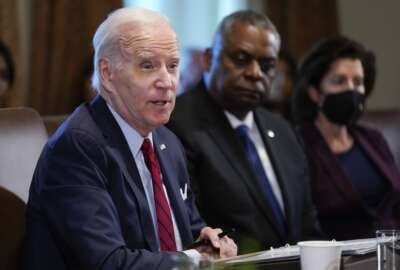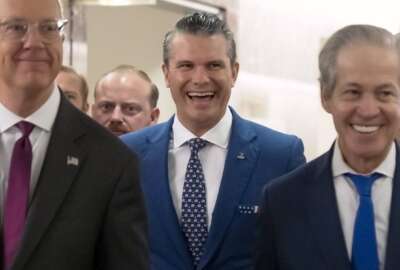Low morale at DHS is ‘referendum on leadership’
Strong leadership is key to boosting employee morale at the Homeland Security Department, according to testimony today before aHouse Homeland Security subcommittee.
Strong leadership is key to boosting employee morale at the Homeland Security Department, according to testimony today before a House Homeland Security subcommittee.
DHS ranked among the lowest of large agencies when it came to worker satisfaction, according to the annual Partnership for Public Service Best Places to Work Survey. The agency ranked 31 of 33 large agencies overall, and last in the categories of “effective leadership” and “family friendly culture and benefits.”
Among DHS subcomponents, a couple of the worst-reviewed departments were the Transportation Security Administration (ranked 227 of 228 subcomponents) and FEMA (ranked 223 of 228).
Likewise, the Federal Employee Viewpoint Survey, conducted each year by the Office of Personnel Management, found DHS ranked 33 out of 37 agencies for job satisfaction.
“It’s a referendum on leadership, and it’s not a good referendum,” said Rep. Michael McCaul (R-Texas), chairman of the House Subcommittee on Oversight, Investigations and Management.
The Partnership’s survey found for the sixth time in a row, leadership is the number one factor that determines employee satisfaction — both at DHS and governtmentwide.
Max Stier, president of the Partnership, testified that a change in work culture must come from the top — and that push must be sustained. That’s a challenge when political appointees come and go with elections. Stier said converting some chief management positions to career positions or term appointments would ensure greater stability.
“Policy can change, but managers stay there to ensure the organization has the capacity to perform,” Stier said.
Currently, 27 percent of DHS senior executives are eligible to retire and by 2016 that number will jump to 59 percent, Stier testified. Between Oct. 1, 2003, and Sept., 20, 2007, 72 percent of the career executives at DHS left the department, according to his testimony.
Jeff Pon, former chief human capital officer with the Energy Department, echoed the need for succession planning at DHS. “A good executive is a replaceable executive. You have a good second bench, if you will,” said Pon, who is now the chief human resources officer at the Society for Human Resource Management.
Leadership development
In response to the Viewpoint Survey results, DHS Secretary Janet Napolitano has established an Employee Engagement Executive Steering Committee, which will include a deputy-level official from each component.
DHS also has launched several programs to groom the next generation of executives. The Senior Executive Service Candidate Development Program identifies employees to step into leadership positions. The DHS Fellows Program is another training program that targets GS-13, 14, and 15-level employees.
The department is moving toward a “common learning management system” that will allow all employees to access the same training opportunities to greater consistency and a “more unified culture,” said Catherine Emerson, DHS CHCO, in her written testimony. Emerson added that DHS is starting a pilot capstone program this summer for 20 department executives.
Adm. Thad Allen, the retired commandant of the U.S. Coast Guard — one of the DHS components with the highest job satisfaction — testified these programs were effective in building a cohesive department with strong leadership. However, he added, these programs are often the “first casualty” of budget cutbacks.
RELATED STORIES
Federal morale deeply impacted by pay freeze, ‘fed bashing’
Special report: Managing Morale
Copyright © 2024 Federal News Network. All rights reserved. This website is not intended for users located within the European Economic Area.





